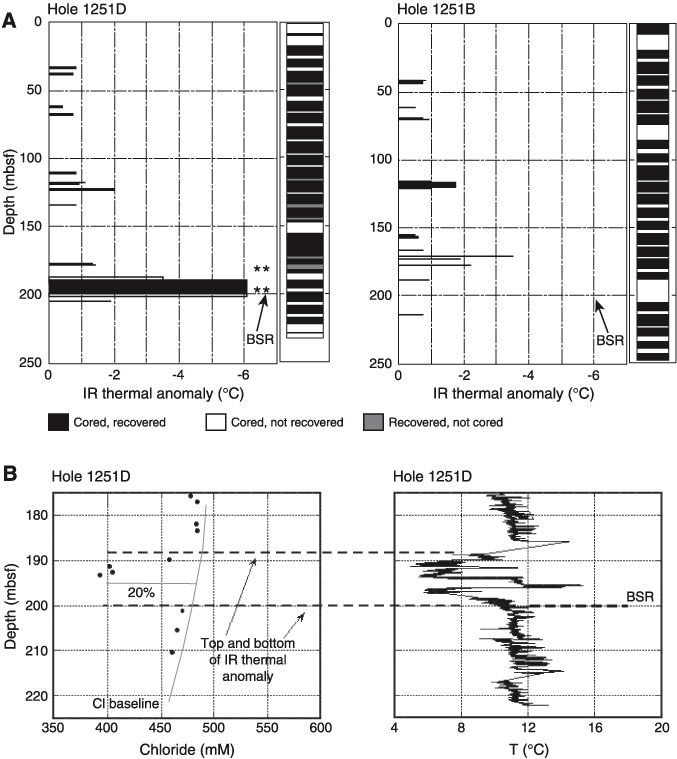
Figure F20. A. Infrared (IR) thermal anomalies measured in two different holes at Site 1251. Note that a major thermal anomaly in the 12 m above the bottom-simulating reflector (BSR) observed in Hole 1251D was not observed in Hole 1251B because that interval was not recovered from Hole 1251B (perhaps because of high hydrate concentration in situ). At this site, IR thermal anomalies are generally small and rare compared to most other sites drilled during Leg 204. B. Comparison between chloride anomalies measured from whole rounds and thermal anomalies for Hole 1251D. The IR data suggest two layers of high hydrate concentration immediately above the BSR but do not provide a good constraint on the concentration of hydrate within these layers. Chloride anomalies suggest a hydrate concentration of ~20% of pore space cannot constrain the thickness of hydrate-bearing layers because of the small number of samples. Moreover, at this site probable thin hydrate-bearing layers (based on IR and resistivity anomalies) were missed completely in the geochemical sampling. By calibrating the densely spaced geophysical data using the sparser geochemical data, improved estimates of hydrate distribution and concentration will be obtained.



![]()